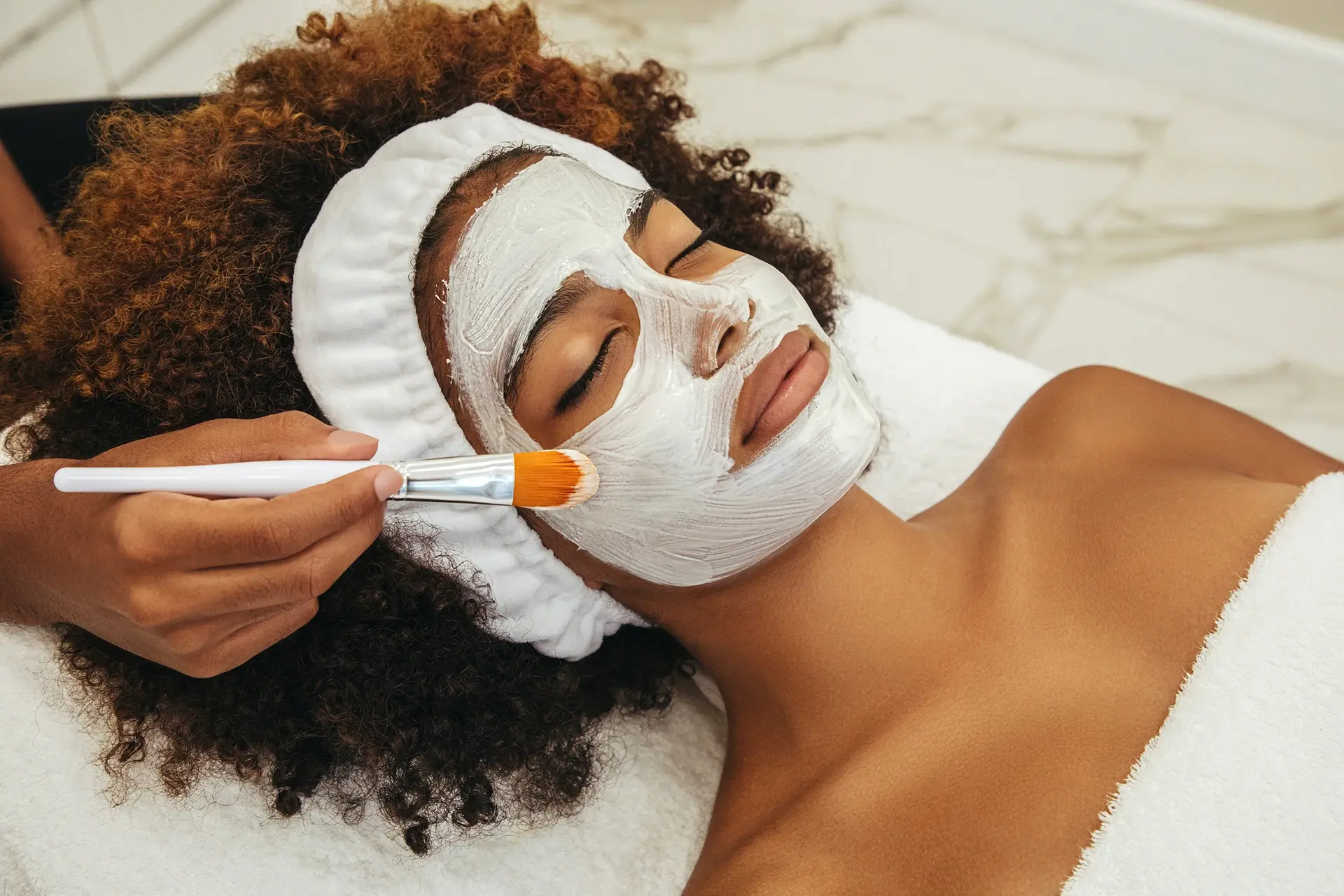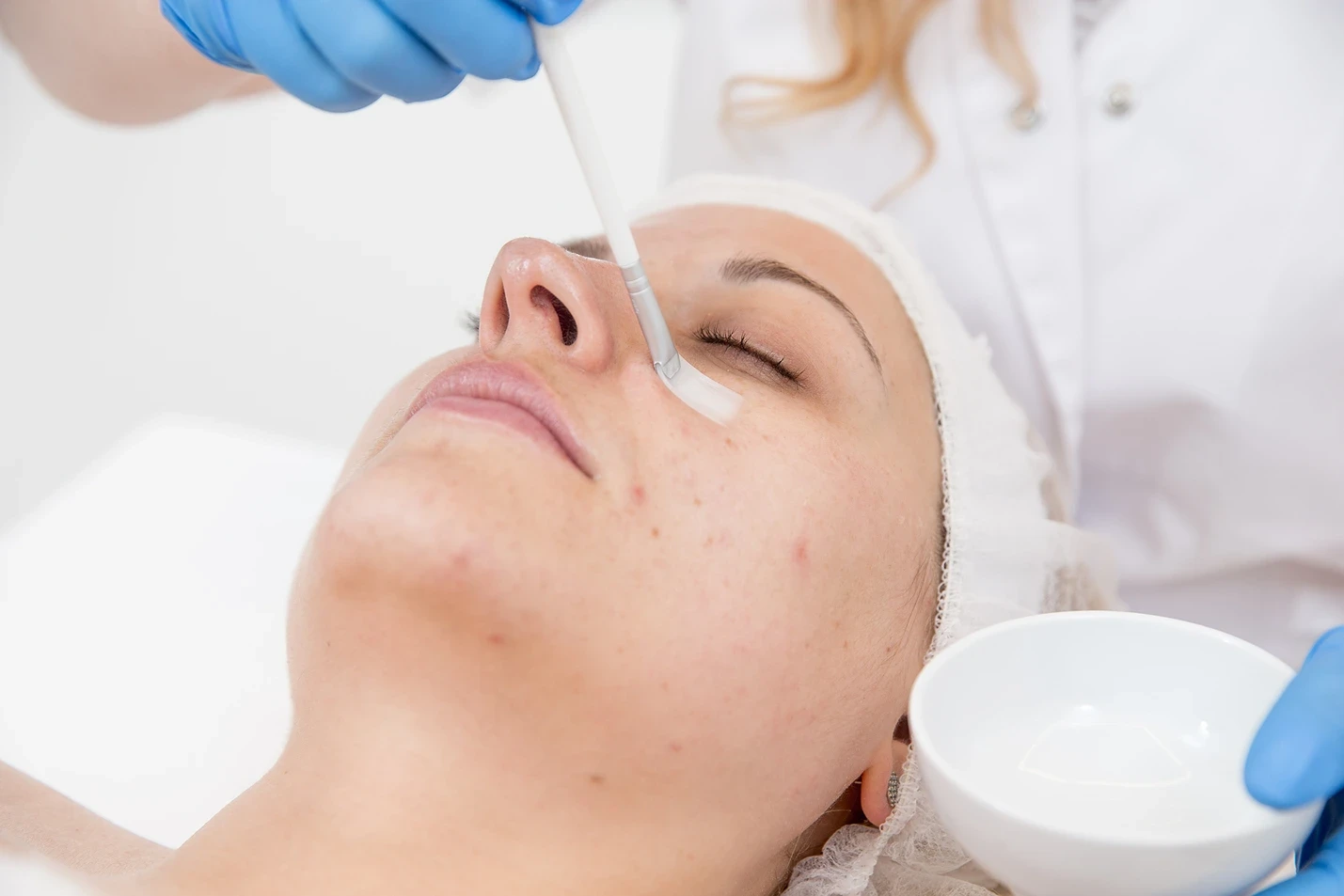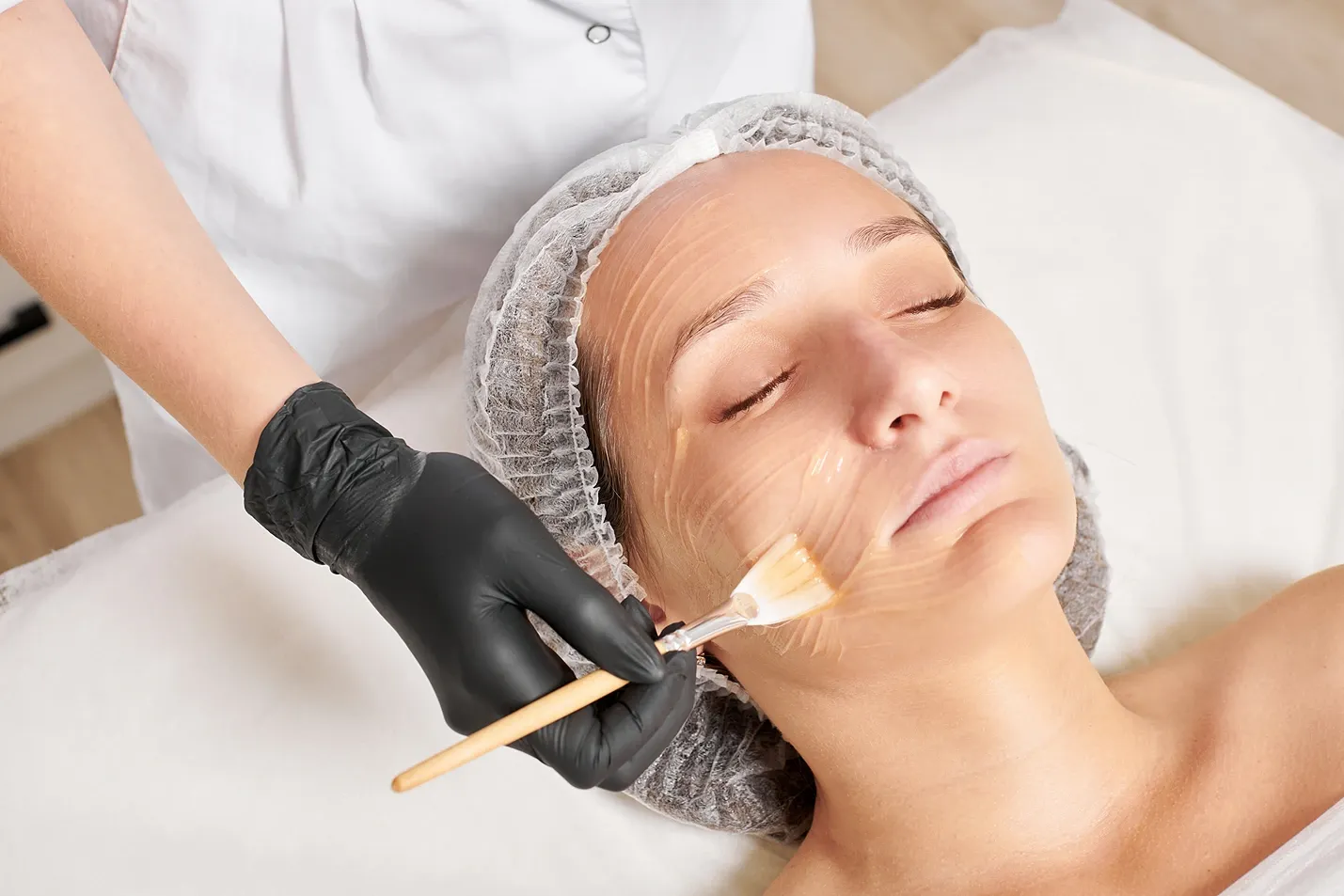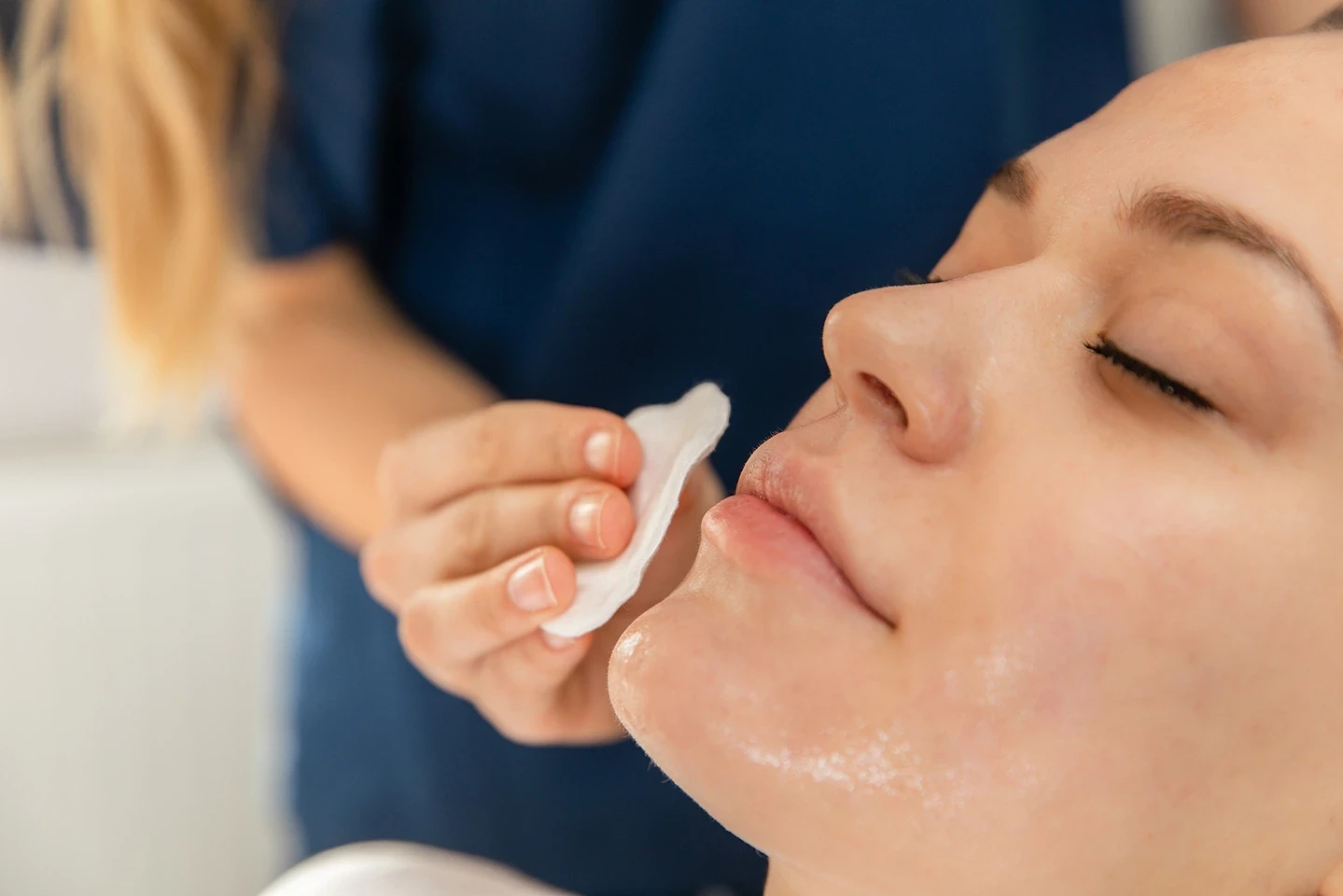How to Safely Achieve Smoother, Healthier Skin with Customized Peel Treatments for Darker Skin Tones
Chemical peels have the power to transform your skin – but only when done right for your unique complexion.
For patients with darker skin tones, chemical peels require a customized approach to minimize risks like hyperpigmentation while maximizing benefits. When performed carefully by an experienced dermatologist, peel treatments can provide real results for conditions like acne, melasma, and signs of aging in darker complexions.
This practical guide outlines how to safely harness the power of chemical peel on black skin. From explaining the different peel types and uses to outlining proper preparation and aftercare, we’ll unravel the dos and don’ts of customized peel treatments focused on achieving healthy, luminous skin for complexions of color.
Chemical Peels for Darker Skin Tone
Chemical peels can provide benefits for darker skin tones when done correctly. Lighter peels using mild acids are generally best suited for darker complexions due to lower risks.
Light and medium-strength peels using acids like salicylic acid and lactic acid can be effective for treating conditions like acne, scarring, and hyperpigmentation in darker skin. These weaker acids peel the outermost layers of skin with less irritation.
- Salicylic acid peels between 20% to 30% can slough off dead skin cells and unclog pores to treat acne without causing excessive inflammation in darker skin. Regular use can improve tone and texture.
- Lactic acid peels provide similar benefits with less discomfort. Medium-strength lactic peels up to 8% are recommended for darker skin tones to exfoliate skin cells.
However, dermatologists recommend precautions for darker complexions due to the risks of complications with chemical peels. These include:
- Post-inflammatory hyperpigmentation is more common in darker skin after peels, with melanin-producing cells becoming overactive when injured. This can lead to dark spots and marks that may take weeks or months to fade.
- Poor wound healing is another issue in some patients with darker skin types, potentially hindering the skin’s ability to recover fully after a peel. Dermatologists may recommend lower peel strengths to mitigate this risk.
Types of Chemical Peels
Chemical peels are classified according to their depth and strength, with deeper peels generally avoided for darker skin tones.
| Peel Type | Description |
| Superficial | Superficial peels mainly involve the outermost layer of the epidermis. They use mild acids like alpha hydroxy acids and beta hydroxy acids to improve texture, tone, and signs of aging. Salicylic acid peels below 20% are usually considered superficial. |
| Medium-depth | Medium-depth peels penetrate the papillary dermis. They use acids at higher concentrations and longer application times to stimulate collagen and elastin production. Glycolic acid levels between 20 to 50% fall into this category. Medium peels are recommended for dark skin only in experienced hands due to the risks of hyperpigmentation. |
| Deep | Deep peels penetrate the reticular dermis, utilizing strong acids that produce a visible “frosting” on the skin. These deep chemical peels at concentrations above 50% are generally considered inappropriate for most patients with darker skin types, though deep peels below 30% can be safely performed in well-selected candidates. |
Uses of Chemical Peels on Dark Skin
When performed carefully, chemical peels can help address several common skin concerns for patients with dark complexions.
Acne and Acne Scars
Acne and acne scarring are perhaps the most common indications for chemical peels in dark-skinned patients. Regular superficial peels with salicylic or glycolic acid can help exfoliate dead skin cells that clog pores, reducing breakouts over time. Medium-depth peels aimed at stimulating collagen can improve acne scars and pits.
Melasma
This is a hyperpigmentation condition that causes brown patches on sun-exposed areas and can respond well to superficial and medium peels. Acids like glycolic, phytic, and lactic acid work as bleaching agents to lighten melanin deposits and even skin tone. A series of peels spaced 4-6 weeks apart offers the best results.
Age Spots
Age spots and other hyperpigmented areas commonly seen in sun-exposed skin of older patients with darker complexions may fade somewhat with regular salicylic or glycolic acid peels. The mild exfoliation and stimulation of collagen and melanin turnover help lighten spots over multiple treatments.
Skin Tone and Texture
Uneven skin tone and texture issues, which are more prominent in dark skin due to increased melanin levels, can be targeted with the exfoliating effects of alpha hydroxy acid peels. Regular use removes discolored surface layers to reveal smoother, more even-toned skin.
In all these applications, chemical peels for dark skin work best as part of a long-term management strategy with multiple treatments spaced at least 4 weeks apart. Patience is needed, as effects tend to accumulate slowly over time.
Preparing Dark Skin for Chemical Peels
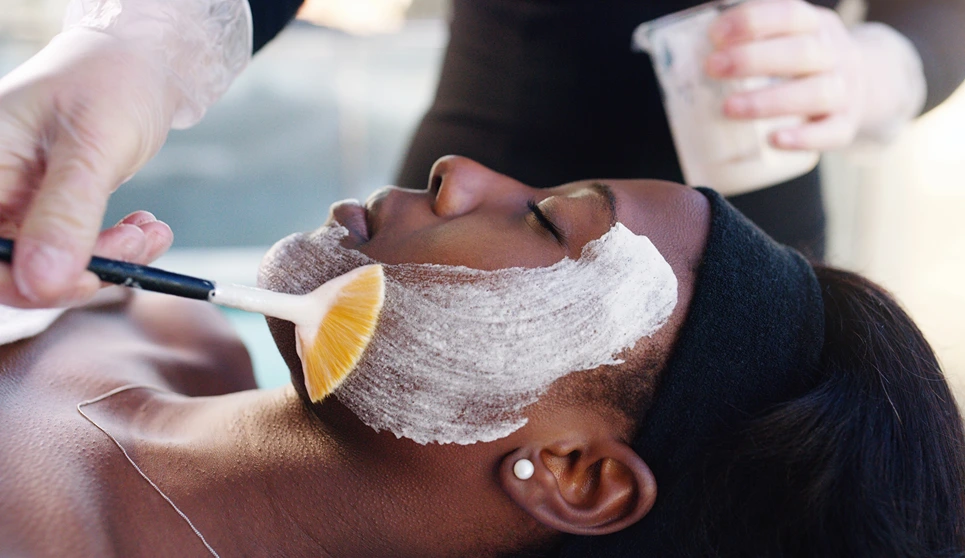
Proper preparation and precautions are essential before conducting chemical peels on dark skin to minimize risks and maximize results.
- Trial superficial peels and skin patch tests are recommended before any medium or deep peels on patients with dark complexions. This allows specialists to gauge the skin’s sensitivity to acid solutions and customize the treatment plan accordingly. Lower concentrations and shorter application times are often used initially.
- The use of post-inflammatory hyperpigmentation creams containing ingredients like hydroquinone, kojic acid, and azelaic acid before and after peels can help prevent dark marks from forming. They work by inhibiting excessive melanin production after skin injury. Starting these creams 2-3 weeks prior to a peel is advisable.
- Strict avoidance of UV exposure, especially after peels, is necessary for dark skin due to increased sensitivity. Sunscreens with SPF 30 or higher should be applied daily. Patients may need to refrain from extensive time in the sun for 2-4 weeks following chemical peels. Protective clothing and hats are also recommended.
Possible Side Effects and Complications
As with any skin procedure, chemical peels carry potential side effects and complications – especially for patients with dark skin tones. Three main issues to watch for include:
- Hyperpigmentation is the most common complication after a chemical peel for dark skin due to the higher concentration of melanin. Even with mild acids, overstimulation of melanin-producing cells during healing can lead to stubborn dark marks and spots that may require months to fade. Proper preparation, lower concentrations, and close monitoring can help reduce this risk.
- An uncomfortable burning or stinging sensation is common immediately after superficial and medium-depth peels, especially in sensitive skin. Using lower acid strengths and short application times can mitigate some burning, though complete avoidance may not be realistic. Patients should be counseled on ways to relieve discomfort at home between treatments.
- Bacterial or viral skin infections are possible if proper antiseptic and sterilization protocols are not followed during the peel procedure itself. The underlying inflammation and skin disruption make dark skin more prone to infection risk. Proper aftercare involving the use of antibacterial ointments in the days following peels can help prevent this complication.
Aftercare of Chemical Peels on Darker Skin
Proper aftercare following chemical peels is essential for effective results and reduced side effects in dark skin types. Key elements of at-home care include:
- Moisturizing the skin regularly during the 2-4 weeks following a chemical peel is imperative for dark skin to aid healing and reduce scaling, flaking, and irritation. Gentle moisturizers containing hyaluronic acid, ceramides, and glycolic acid work best. Dry skin left unhydrated becomes vulnerable to post-inflammatory hyperpigmentation and other complications. Patients should apply moisturizer multiple times a day.
- Strict sun protection is critical after chemical peels for dark skin. Exposed skin becomes highly susceptible to UV damage and pigmentation issues due to the peel’s exfoliating effects. Patients must apply broad-spectrum, mineral-based sunscreens with SPF 50 daily for at least 4 weeks after a peel. Wearing hats, sunglasses, and protective clothing during the day is also recommended.
- Avoiding irritating ingredients and skincare products is important during the weeks following a chemical peel on dark skin. Harsh cleansers and astringents, fragranced lotions, and acidic toners can further inflame and compromise healing skin. Patients should opt for gentle, hypoallergenic cleansers and therapies during this time.
Why See a Professional?
While chemical peels can provide benefits for darker skin tones when done correctly, seeking treatment from a board-certified dermatologist is typically recommended to minimize risks and complications.
Key reasons to consult a professional:
- Deeper peels involving higher acid concentrations should generally only be performed by experienced dermatologists given the greater risks for dark skin. DIY peels using high strengths are not advised.
- Properly assessing skin type and sensitivity is crucial before recommending suitable peel strengths and agents. Only a dermatologist can accurately gauge a patient’s risks based on medical history, genetic factors, and prior reactions.
- Trial superficial peels and skin patch tests allow dermatologists to customize a treatment plan specific to an individual’s dark skin tone and concerns. This minimizes the chances of unexpected side effects like hyperpigmentation.
- Ensuring proper Aftercare instructions and access to follow-up visits helps dermatologists optimize results while managing any issues that arise after a peel. At-home care protocols are tailored to each patient.
- Addressing pre-existing conditions like melasma and acne that may worsen with peels requires a dermatologist’s experience and knowledge of appropriate adjunct therapies.
- More advanced procedures combining chemical peels with laser resurfacing and other modalities should only be performed by specialists familiar with complex issues in darker skin.
Take the Next Step Toward Healthier Skin

If you want smoother, refreshed skin without harmful side effects, our board-certified dermatologists can help. At CosMedic LaserMD, we customize precise peel regimens for each patient’s unique skin tone, history, and goals.
Schedule a complimentary consultation with one of our dermatologic experts. They’ll answer your questions, determine if chemical peels are right for you, and recommend a safe, effective treatment plan using trial peels and proper precautions.
You can expect real results like fading acne marks, diminished hyperpigmentation, and refined texture – without harsh side effects. Take the first step toward achieving the even, radiant complexion you desire. Call CosMedic LaserMD today at (734) 249-8722 to schedule your confidential consultation and start your journey toward healthier, happier skin.

